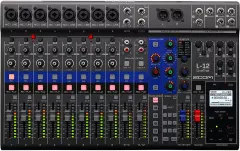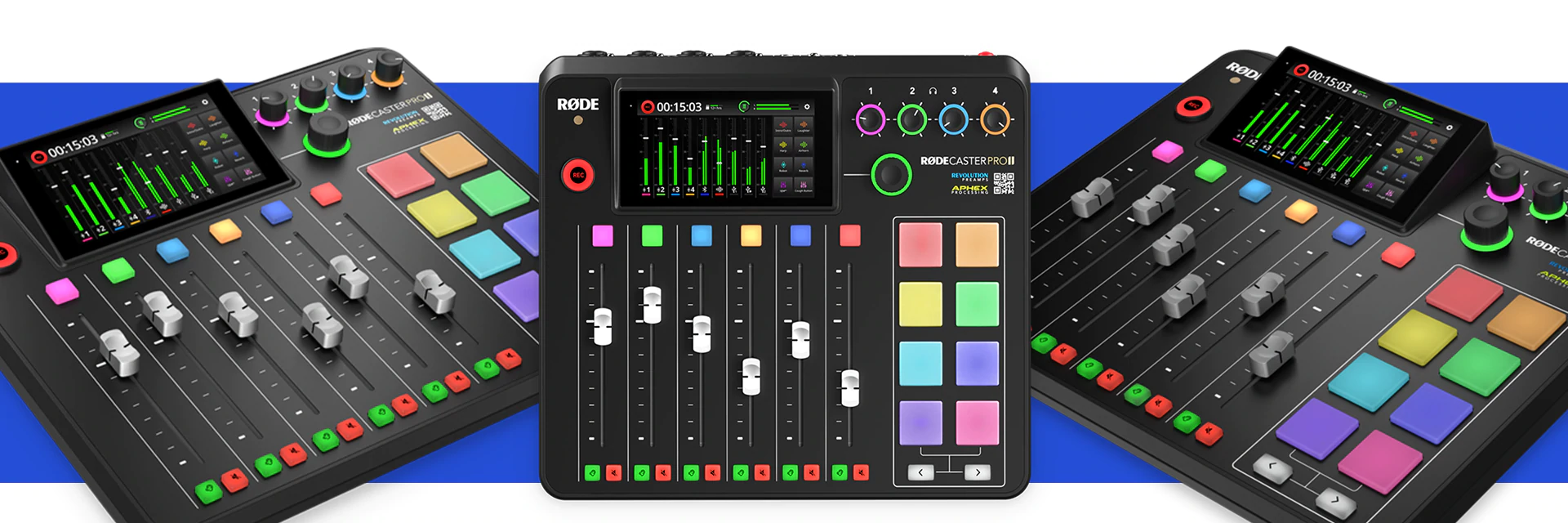When you need to magnify everyone, how do you connect together numerous diverse instruments into a single, cohesive sound?
Any music group’s secret weapon for sounding clean and balanced is the dependable audio mixers. An audio mixer is one of the most critical pieces of equipment you can acquire, whether you’re performing live or recording.
Which audio mixer should you purchase?
That is the $100 – or $1,000 – question, depending on your budget and requirements. Sound mixers are available at a range of prices for both amateurs and professionals.
While they all do the same task of combining several instruments and sound sources, they all have distinct specifications and features that you can find more or less useful.
It helps to have a shopping guide to refer to while deciding what you need. Boutique Moods can help with that. We’ve put up this audio mixer shopping guide and review based on hours of research to save you time and money.
This tutorial will assist you in identifying and understanding the crucial features you may require whether you are purchasing your first audio mixer or upgrading an existing one.
Continue reading to learn about the types of audio mixers that can help you take your sonic masterpieces to the next level.
| IMAGE | PRODUCT | DETAILS | ||
|---|---|---|---|---|
| Best of the Best |
Best of the Best

|
zoom livetrak b793c2 |
|
Check On Amazon |

|
YAMAHA MG10XU 10 Input Stereo Mixer |
|
Check On Amazon | |
| Best Bang for the Buck |
Best Bang for the Buck

|
Behringer XENYX 502 Premium 5-Input 2-Bus Mixer |
|
Check On Amazon |

|
Pyle Professional Audio Mixer |
|
Check On Amazon | |
|
|
TC Helicon GoXLR Revolutionary Online Broadcaster |
|
Check On Amazon |
Table of Contents
- THE PURPOSE OF AN AUDIO MIXER
- HOBBY AUDIO MIXERS VS. PROFESSIONAL AUDIO MIXERS
- AUDIO MIXER FEATURES
- AUDIO MIXER PRICES
- TIPS
- Conclusion
THE PURPOSE OF AN AUDIO MIXER
Any live or recorded performance ensemble’s heart is the classic audio mixer. When multiple instruments are connected and amplified, they usually require a central source to manage volume levels and effects. Otherwise, some instruments would be louder than others, throwing the entire ensemble off.
All electrified instruments and microphones are connected together in an audio mixer. It has several options for loudness and effects, allowing you to adjust the overall balance of individual sounds. Audio mixers can also be changed on the fly.
There are several different types of audio mixers to pick from. They all perform the same function, whether they are large or small, simple or complicated.
HOBBY AUDIO MIXERS VS. PROFESSIONAL AUDIO MIXERS
Hobbyist audio mixers
There are variations between audio mixers designed for weekend hobbyists and audio mixers designed for working professionals, like with most music and audio equipment. Hobby audio mixers are often less expensive and easier to use.
They also have a smaller selection of audio sources and settings. This category includes the majority of portable and budget-friendly audio mixers.
Professional-grade audio mixers
Audio mixers designed for pros are usually larger and have more functions and inputs. They’re made to give the performer as much control and flexibility as possible throughout live and recorded performances.
Consider how you’ll utilize the equipment while deciding between a hobby and a professional sound mixer. How frequently do you play or record music?
How big is the audience you wish to reach? Your responses should assist you in making a decision.
AUDIO MIXER FEATURES

Inputs For Audio Mixers
The number of inputs and channels provided by an audio mixer is maybe the most essential characteristic. An input is just a plug to which any sound source, such as an electric instrument or a microphone, can be connected. You can adjust the volume and sound via this link. A channel is a collection of controls that affect one or more inputs.
Most audio mixers have inputs and channels that allow you to handle many sound sources simultaneously. Mixers with two to eight inputs and controls are commonly seen in even numbers. Larger, more professional mixers typically have a higher number of inputs, ranging from 32 to 64.
Special effects
Audio mixers are capable of controlling more than simply the volume of the instruments and microphones connected to them.
In fact, with a few twists and turns of a knob, they may modify the overall sound of an instrument. Most audio mixers have comparable controls, but professional mixers provide you more precise sound control.
The following are examples of common special effects.
- Equalization: This allows you to modify the sound of a source by adjusting the level of different frequencies, which are usually divided into low, medium, and high. Equalization is controlled by the mixer’s sliders or knobs.
- echo: You may generate an echo effect to make the sound appear to be in a bigger space. It’s usually found as a single knob on most audio mixers.
- Reverb: is a softer type of echo that adds depth to singers or instruments without sounding like they’re in a cave or a hall.
Portability
The old-school audio mixers used to be the size of tables. It goes without saying that you wouldn’t be moving these mixers on a daily basis. Digital audio mixers, on the other hand, can now be as small as your pocket.
When you’re on the go, portable audio mixers are a terrific solution. Some laptop-sized portable mixers have between 8 and 16 input channels. A mobile audio mixer with two or four channels could be even more compact. These are widely used in video and audio recording studios.
Computer compatibility
The way individuals record audio has changed thanks to computers. Because computers are a more cheap way to record and edit audio, more audio professionals and musicians are using them.
An audio mixer must be able to communicate with the computer in order to be used with digital music production. A built-in USB interface is the most popular method. The audio mixer connects to your computer via USB cable and controls your audio software.
An audio output jack is another way to connect an audio mixer to a computer. This port, found on the back of most mixers, connects to your computer’s sound card or audio interface through a wire. The disadvantage of this method is that it does not allow you to record individual channels. All microphones and instruments are treated as one source by the audio software.
Built-in recorder
If you want to record the sounds or music you control in your mixer, you’ll need a recording device that can convert the sound into a digital file.
The majority of mixers concentrate on modifying the sound when it is being played, rather than capturing it.
However, some compact, portable audio mixers come with a recorder. The amount of inputs you can record at once is usually limited with these all-in-one systems, but they do provide you rudimentary flexibility over starting and pausing the recording.
These are ideal for home video production and recording yourself singing or playing an instrument, narrating voice overs, or doing other individual audio work.
AUDIO MIXER PRICES

With audio mixers, as with any other piece of audio gear, you get what you paid for. More inputs, features, and build quality are available with more expensive choices.
- Budget mixers begin at $30 and quickly rise to $100 or $200. Many amazing portable and tiny choices with a few dedicated channels and effects are available for this price. If you require extra inputs, expect to pay between $100 and $300 for a tiny yet professional mixer. Many touring musicians choose to bring this type of gear with them.
- Mid-range to premium audio mixers, which cost upwards of $300, can help home recording studios. These audio mixers have the most inputs, channels, built-in effects, and controls of any on the market.
TIPS
- Select an audio mixer with fewer inputs than you’ll require.
- You can record separate sources independently if you have a small mixer with few inputs.
- Small-to-medium bands in live performance environments benefit from medium-sized mixers.
- If you’re recording into a computer, get a bigger audio mixer or a USB controller for your home studio.
Conclusion
When you’re shopping for an audio mixer, it pays to do a bit of research. An audio mixer is different from a PA system.
it is meant to tie together two or more sound sources together rather than distribute the sound all over a room or venue.
On the other hand, since they are so versatile, they are often used by bands as a way to get a balanced, professional sound.
Whether you’re recording live or playing off your computer as a solo artist, an audio mixer can help you achieve that rich and professional sound that most budget home studios lack.

